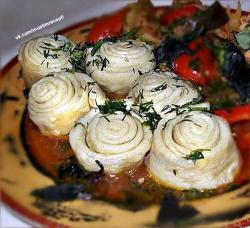
The national dish of the Dagestanis. National dishes of Dagestan cuisine.
These traditions have developed over the centuries, therefore, the recipes of many dishes have remained unchanged, and some have simply been perfected by modern chefs. will not be an exception in this matter and Dagestan cuisine.
Dagestan cuisine went through thorns before reaching the stars. After all, living conditions in this country have never been easy. Alpine villages and auls were not spoiled by nature with an abundance of food. And even today it is not easy for the residents of these areas: there are no shops nearby. You have to live by subsistence farming. The main products that any Dagestanis have are flour, cheese, a large amount of greens, lamb, goat meat and other types of meat. Despite...
Traditional Dagestan cuisine
Dagestan in translation - "country of mountains". Indeed, most of its territory is occupied by ranges, and the most massive of them is the Main Caucasian. The mountainous terrain and the proximity of the Caspian Sea have greatly influenced the way of life and traditions of the Dagestanis, including gastronomic ones.
Highlanders cook from what they always have at hand: meat, dairy products, flour, potatoes, corn, greens ... And for the most part, their dishes are simple and satisfying: what else does a person engaged in heavy physical labor from dawn to dusk need? But on solemn occasions, real dishes appear on the Dagestan table - both meat, and flour, and sweet. Many ethnic groups live on this land: Avars ...

Dagestan cuisine
Dagestan! The oldest cradle of many peoples and nationalities of the Caucasus, a unique multinational republic in its composition, in which dozens of ethnic groups live, consolidating around six related in origin and language, but independent large six nationalities: Avars, Kumyks, Dargins, Laks, Lezgins, Tats.
The cuisine of each of these peoples is somewhat similar, but it is also original, continuing the millennial traditions of the departed peoples, the ancestors of the indigenous population of Dagestan.
In recent times, the menu of the bulk of the poor mountaineers was meager. Vegetable and dairy products predominated, from which they prepared lean soups, cereals, barley bread, dairy products...
Dagestan flour halva

We bring to your attention a recipe on how to quick hand cook Dagestan flour halva. Many people have known the taste of halva since childhood, they were treated to them by relatives when they went to visit, and on holidays, it was an obligatory meal. Today, not every young housewife knows how to cook it. Having prepared it yourself, you will surprise your loved ones and relatives with a new dish. Although the preparation of the recipe will have to tinker, but the result will be worth it. I am sure that your household will really like the Dagestan halva and will ask you to cook it more often, they write on the Dagestan cuisine page on social networks.
For halva you will need:
• flour premium wheat - 1 kg;
• melted butter - 300 g;
• powdered sugar - 600...
Dagestan miracle
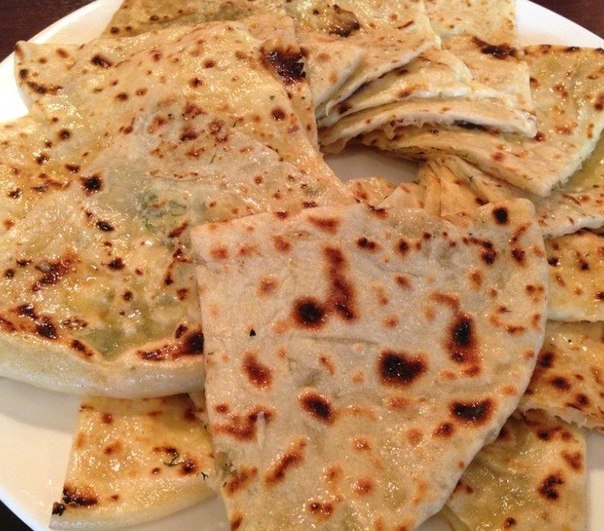
In Dagestan, you should definitely try khinkal and miracle. Khinkal is the real pride of the highlanders, and everywhere in Dagestan it is cooked a little differently, because as many as 14 nationalities live in Dagestan. This dish, in theory, is very reminiscent of the Ingush khaltam dulkh. Meat with pieces of dough boiled in broth, which are eaten dipped in sauce and washed down with broth with spices.
Others make sauces here: kefir with garlic and herbs or spicy tomato sauce. And with dumplings as soon as they do not refine themselves! Avar khinkal are lush, thick cakes made from dough with soda, on yogurt. Kumyks and Lezgins prepare khinkal from unleavened dough, as for dumplings, cutting into squares, rhombuses or strips. Lakskiy khinkal...
Darginsky khinkal (puff khinkal) (Dagestan cuisine)
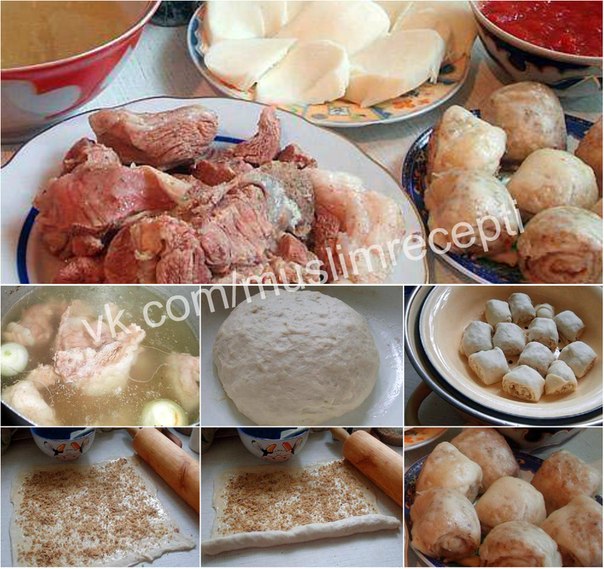
Ingredients:
lamb - 1 kg
onion - 1 bulb
salt, pepper to taste
For khinkal:
flour - 500 gr.
warm milk - 250 gr.
dry yeast - 2 teaspoons
a pinch of salt
vegetable oil - 3 tablespoons
melted drain butter ~ 150 gr.
chopped walnuts - 100-150 gr.
walnut grass (optional)
Cooking method:
Boil a kilogram of coarsely chopped lamb with a whole onion, do not forget to salt and pepper. Boil the lamb for a long time over low heat ... Do not let the broth boil too much so that it is transparent ...
While the meat is boiling, knead the dough for khinkal.
Dilute 2 teaspoons of dry yeast in 250 ml of warm milk.
In a deep bowl, mix the sifted flour and ...
Green khoegusht / Thai cuisine

Despite the current legends, the true history of the settlement of the Mountain Jews in the North Caucasus is hidden in the mists of time. They received the name "mountain" in the 19th century, when Dagestan was captured by Russia. At that time, in official Russian documents, all Caucasian peoples were called mountain peoples, including those who lived on the plains. This fate did not escape the East Caucasian Jews.
In fact, the majority of Dagestan Jews then lived in the flat zone. Nevertheless, the name "Mountain Jews" has taken root - both in everyday speech and in research literature. Due to the long close proximity to the Caucasian Persians (Tats), the Mountain Jews adopted one of the Persian dialects ...
Sokhta (Dagestan cuisine)

Products:
1kg lamb liver
5 onions
200-250g sultanas or dried apricots
150-200g melted butter
pepper,
salt
Cut the liver into large pieces, remove blood clots, boil over low heat and pass through a meat grinder.
Peel the onion, finely chop and fry in melted butter until golden brown.
Peel the dried apricots, rinse under cold water, boil.
Mix everything together, add ground black pepper, salt and stuff the minced lamb intestines with the minced meat, washed several times, turning them inside out
Rinse the resulting sausage once again to remove the intestinal mucus and boil in salted boiling water.
When serving, cut into pieces. Serve with any khinkal or with a side dish of rice, boiled pasta, mashed potatoes.
Baklava lakskaya (Dagestan cuisine)
Baklava - very tender, light, tasty.
For baking, you will need either a baking sheet with sides or a silicone mold,
For test:
3.5 cups flour
1 pack of plums. butter (softened)
2 yolks in flour 2 egg whites aside, come in handy.,
1 glass of sour cream or 200 gr pack,
baking powder (1 sachet) for 500 grams of flour which.
Grind everything into a single mass and roll up 3 identical balls. In the cold for 30-40 minutes.
Filling:
1.5 glasses walnuts grind in a blender.
Add 3 squirrels there (2 set aside + 1)
- remove the yolk to the side, it will come in handy :) + 1.5 cups of sugar sand.
- Beat or mix everything into a homogeneous thick mass.
Roll out the 1st ball into a cake at the bottom of the mold and put the filling (half of it), cover ...
Miracle with meat (Afarar) / Cuisine of Dagestan

SAVE ON YOUR WALL SO YOU DON'T LOSE THE RECIPE!
For unleavened dough, you need to take 500 g of flour, sift through a sieve, add salt and gradually pour in 1 glass of water, kneading a dense soft dough. Knead it a little and leave for 20 minutes to “rest”.
For the filling, we prepare minced beef and lamb in a ratio of 2 to 1. For 500 gr. minced meat, take 1 onion, chop finely, combine with meat, salt and pepper, add 1 raw egg. We mix everything.
Then we form a thick sausage from the dough, cut into pieces 2 cm thick and roll each into a very thin oval pancake (folded in half, it should fit in your pan). We spread the filling on one half of the pancake in a thin layer ...
Favorite miracle with potatoes.

Ingredients
potatoes 6 pcs. (boiled)
Adyghe cheese 300 g
flour 2.5 tbsp.
kefir 200 ml
soda 1 tsp
salt 0.5 tsp
butter
Cooking
Removed the cake and greased butter.
Dagestan cakes are ready for a miracle! Enjoy your meal!!!
DAGESTAN FLOUR HALVA.

And I want to tell you how to quickly prepare Dagestan flour halva, this taste has been familiar to me since childhood. Having prepared it, you will surprise your loved ones and relatives with a new dish. Although the preparation of the recipe will have to tinker, but the result will be worth it. Your family members will like Dagestan halva and they will ask you to cook it more often.
For halva you will need:
• premium wheat flour - 1 kg;
• melted butter - 300 g;
• powdered sugar - 600 g.
Cooking halva
• In a saucepan or a frying pan with a thick bottom put the butter, start to melt it. When it starts to boil, pour the flour in small portions. You need to stir continuously - until thickened, so as not to form ...
Favorite miracle with potatoes.

Very easy to prepare and very tasty. Such Dagestan miracles with potatoes are delicious, both hot and cold. But in hot, probably, they still like it more. Fresh from the pan, like any pastry, it always tastes better.
Ingredients
potatoes 6 pcs. (boiled)
Adyghe cheese 300 g
flour 2.5 tbsp.
kefir 200 ml
soda 1 tsp
salt 0.5 tsp
butter
Cooking
We kneaded the dough for a miracle with potatoes and cheese based on kefir, soda, flour and salt.
Divide the dough into 8 pieces and roll into a ball.
Roll out the ball into a thin cake and put the filling. We collect and seal.
Roll out neatly and very thinly.
We take a frying pan with a thick bottom and heat it up, then put the cake and fry on both sides without oil.
Dough:
Flour-2 tbsp
Water-1 tbsp
Salt-0.5 tsp
Vegetable oil-2 tbsp
Mix the flour with salt and butter and pour boiling water over it. Mix first with a spoon, then well with your hands. Roll out the dough and cut out circles.
Filling:
Onion-100 gr cubes
Egg-3 pieces raw
Salt pepper
Drain oil-1 tbsp
Fry the onion in oil, cool. Chop the eggs, add the fried onions, salt and pepper.
Wrap a circle of dough around your finger.
We should get a barrel. Pour the filling into this barrel
And we close it
We immediately throw it into boiling water and begin to sculpt the next one. Ready Kurze should float up. Serve with melted butter
© Arinushka

Miracle with pumpkin
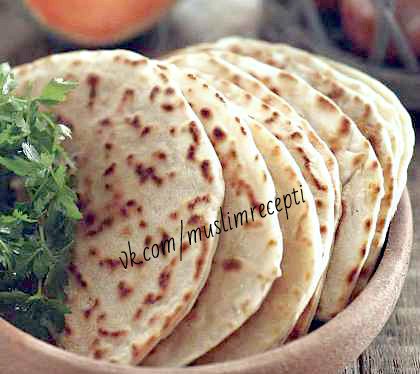
Traditional Dagestani cakes with filling - a miracle (with an emphasis on the second syllable) are loved not only in the mountainous republic, but also far beyond its borders. Several types of dough and a huge variety of fillings (pumpkin, greens, green onions with eggs, cottage cheese with eggs and potatoes, meat, potatoes, cabbage) make it possible to choose an option for the most fastidious taste. In villages, miracles are baked in special ovens. Citizens at home either bake them in the oven or fry them in a dry frying pan. For thin monsters, the dough is usually kneaded the simplest, freshest on water. But if the water is replaced sour milk, cakes come out softer and more tender. From yeast dough thick miracles are obtained, a kind of ruddy pies ...
Apricot porridge. / Dagestan cuisine.
It is prepared by all the peoples of Dagestan and the Dargins, and the Avars, and the Kumyks, and so on. This is a very healthy and nutritious cereal. Many mothers are brought to the hospital, as it helps to contract the uterus. Here's how I do it.
I take 1.5 liters of apricot juice (good)
400 ml water
350 gr flour (I sift it)
And urbech to taste. I love with almond or apricot
So let's get started. We take a pan, pour juice into it and put it on fire. In another bowl, mix flour and water. We interfere so that there are no lumps and the consistency resembles liquid sour cream. At this time, the juice begins to boil and we add our mixture of flour and water and mix well. It will become cloudy at first. And so we interfere with it for 10-15 minutes, continuously! Then on a small fire and cook for another 25 minutes. Our porridge will become lighter and more liquid. Here she is ready. Serve with Urbech)
Submitted by Umm Umar
INGREDIENTS
6 eggs
1 cup of sugar
1 glass of vegetable oil
flour
COOKING METHOD
Step 1
Beat five eggs out of six a little with a fork, then mix thoroughly with sugar and butter.
Step 2
Gradually add the sifted flour to this mixture, mixing thoroughly. You should have a soft, non-sticky dough. If the dough is too steep, the cakes will come out dense and not as tasty. It is better to knead the dough longer, and do not add more flour.
Step 3
Divide the dough into 6 equal parts. Form each part into a ball and knead into a round cake.
Step 4
Roll out each tortilla on a floured surface into a neat circle about 2.5 cm thick.
Step 5
Prick the cakes, make their patterns.
Step 6
Place the tortillas on a parchment-lined baking sheet and brush with the remaining lightly beaten egg. Bake in an oven preheated to 150–160 ° C until golden brown, 30–35 min. Cool and serve.
Before considering the features of the Dagestan cuisine, it is necessary to imagine what Dagestan is. It is the most multinational republic in the Russian Federation. There is no such nationality as the Dagestanis. More than a hundred nationalities consider the Republic of Dagestan their home. Each of them has their own culinary preferences. National dishes Dagestan cuisine is characterized by diversity. In each region they are prepared with some peculiarities. It is impossible to say for sure which dish is the best. Each of them is attractive in its own way.
Dagestan cuisine is rooted in the distant past, carefully preserving the traditions of past generations. Only local products are used: meat, flour, cheese, cottage cheese, herbs, vegetables. Dagestanis love tomatoes, beans, onions, garlic, dried apricots. In the recipes of some dishes, you can find wild-growing ingredients: nettle, quinoa, mint, etc. Despite the many differences inherent in the regions of the republic, the richness of Dagestan cuisine is characterized by some common features:
- The preferred meat is lamb, and fresh. Sometimes Dagestanis indulge themselves with beef. Pork is almost non-existent. There are many dishes where offal is used: liver, tripe, heart and others. Skillful Dagestan chefs are capable of making amazing dishes from such seemingly not very valuable raw materials.
- Culinary products are very peculiar, but not complicated in their preparation. Refined, expensive and hard-to-find raw materials are usually not used. All ingredients are of local origin. Most dishes can be made in any home in Dagestan.
- National dishes of Dagestan cuisine are often very spicy. Everywhere they put a lot of pepper, both for the first and second courses.
- In addition to pepper, Dagestanis use a rich set of various spices and spices: cilantro, bay leaf, cumin, garlic and others. Dagestan chefs always have a set of interesting national spices in their arsenal. Meat dishes, for example, khinkal, must be seasoned with sour cream with garlic or tomato sauce with roasted grated cumin and black pepper.
- Dough dishes are very popular. For example, burchak-shurpa is the first dish of beans, potatoes and unleavened homemade noodles. Instead of bread, they prepare all kinds of cakes, including the famous Dagestan churek. Many pastry dishes with various fillings of pumpkin, lamb, eggs, herbs, onions and various herbs. Use wheat, rye and corn flour.
The popularity of lamb dough is associated with the traditions and features of the life of the peoples of Dagestan. So, sheep breeding has always been widespread in this region. Shepherds took hearty food with them, so in national recipes Lots of dough and meat. Moreover, many culinary products can be taken with you. National dishes of Dagestan cuisine are usually very nutritious.
The visiting card of Dagestan cuisine is khinkal. It's like dumplings in Ukraine, plov in Uzbekistan and dolma in Azerbaijan. It is impossible to say for sure whether this is the first dish or the second. Khinkal is prepared in all regions of Dagestan. True, there are some differences. For example, Kumyk and Lak khinkal are made from unleavened dough, and Avar khinkal is made from dough based on sour milk. In its design, khinkal resembles dumplings. The filling is made from lamb or cheese. Khinkal can be served alone or with lamb broth. In Dagestan, it is believed that if a girl wants to get married successfully, she simply must be able to cook this dish deliciously!
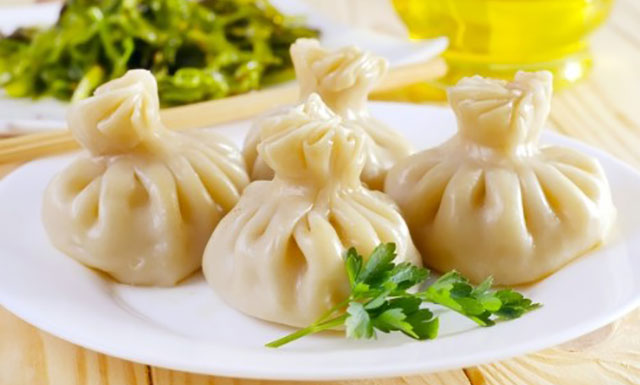
Another dish that resembles dumplings is kurze. Only they are made in the form of a drop and must be pinched with a pigtail. And the filling here is more piquant and varied: meat, vegetables, cottage cheese, eggs, potatoes, cheese, onions, plus, of course, various herbs. Moreover, these components can be in various combinations.

Chudu - the most popular dish - is a simple pie that is prepared in any home in Dagestan. The filling is spread in the center of the cake and covered with another cake. The edges are folded, a hole is cut in the center and baked in the oven. In some villages, miracles are still being made in traditional open ovens. The taste of such a miracle is incomparable with the version from a modern oven.
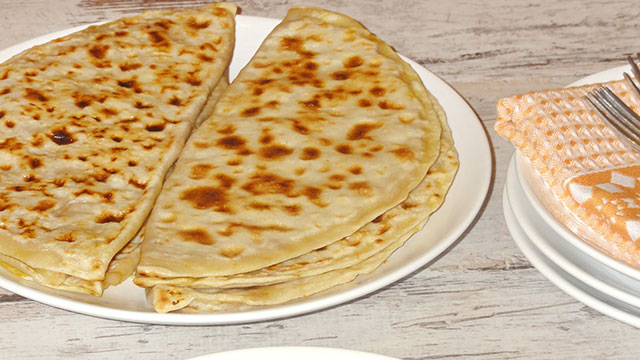
Sokhta is boiled sausages stuffed with minced lamb liver, fried onions and boiled dried apricots.

Khaltama - Dagestan dumplings. Dough is prepared from cornmeal, formed into small ovals and boiled in lamb broth. Traditionally, the dumplings themselves are served in separate bowls, while the broth and meat are served separately. The dish is seasoned with garlic dressing or sour milk sauce.

Kaurma is a dish made from scars. They are first boiled, then finely cut, fried together with pieces of heart, liver and onion.

Love in Dagestan and sweets. Flour halva, nut halva, sweet puffed corn, baklava, chak-chak, urbech, walnuts with natural honey are very popular and interesting.
All these dishes are easy to prepare.
For example, flour halva is a traditional sweet for the holiday of Eid al-Fitr. They cook it in a pan. To do this, melt butter on it, add flour and mix thoroughly until a crumbly yellow mass is obtained. Then add honey, stir a little more. The finished halva is laid out on a plate, the surface is leveled, cooled, cut into slices, decorated with nuts. They eat with tea.

One of the interesting sweet dishes is urbech - a thick dark brown mass obtained by grinding hemp or flax seeds. The grated oily mass is mixed with honey and melted butter. It turns out a tasty and nutritious delicacy, which is also used in traditional medicine.
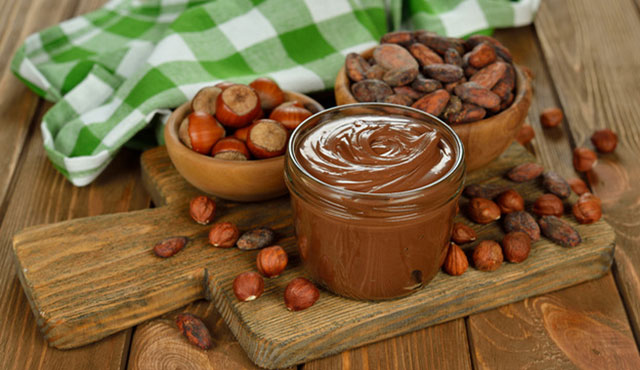
Dagestanis are very hospitable people. Each highlander considers it an honor to adequately receive a guest at any time of the day or night. The guest is served the best food. One of the ancient traditions of Dagestan is that the hostess always leaves a portion of food before lunch or dinner in case a guest unexpectedly arrives. A guest in the house - happiness in the house, as the Dagestanis say. And the invariable attribute of the hospitality of this sunny country, of course, is the national dishes of the Dagestan cuisine.
IDEAS AND TIPS
Dishes of the season: Dagestan cuisine from ethnocafe "Int"
3832 | September 14, 2016
We promised that with the onset of each season we would share with you delicious recipes from local products, and the chefs of the best institutions of Makhachkala will help us in this. This time we decided to turn to Dagestan cuisine.
The Pavilion editors, together with the Int ethnocafe, prepared seven recipes, including main dishes, a dessert made from shortbread halva, and healthy drink"Buza". Read, try to cook and share your impressions!
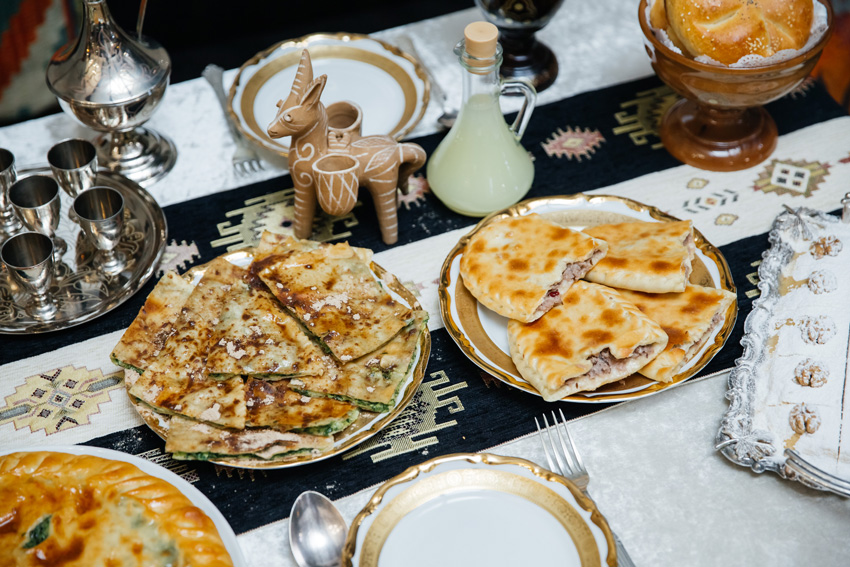
“Dagestan cuisine is one of the most diverse and delicious in the world. For 8 years of work, we had the good fortune to make sure that everyone likes it. Our food reminds Dagestanis of their grandmothers and their native village. And how many laudatory reviews we received from guests from different corners our country and the world! It is interesting for all visitors to try the local cuisine and thus plunge into the atmosphere of mountainous Dagestan. And this inspires us for further work,” says Saidat Kurbanova, head chef of the Int ethnocafe, to our editorial staff.
Seven grain soup
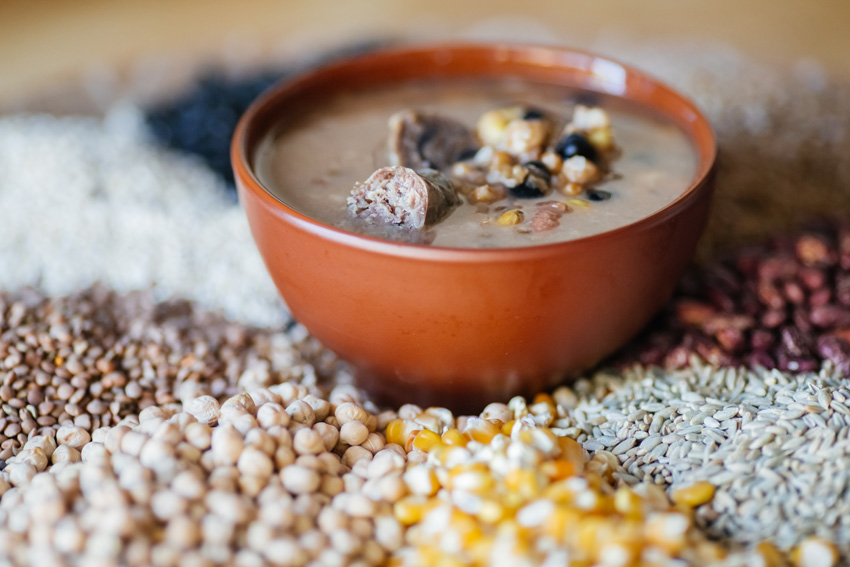
Ingredients:
Black peas - 1 kg
Green peas (laksky) - 1 kg
Beans - 0.5 kg
Nuhut Dagestan - 0.5 kg
Wheat - 0.5 kg
Oats - 0.5 kg
Rye - 0.5 kg
Corn - 0.5 kg
Cooking:
Everything is cooked separately, because the cooking time for each ingredient is different. Legumes need to be soaked in advance and at the same time cook dried meat in another pan (you can also fresh). In the old days, dried tongue was mainly boiled, and soup was prepared in the same broth. Nowadays, they prefer to cook a dish on the broth of fresh meat. After all the products are cooked, you need to mix them in a common pan and add spices: salt, pepper, cumin, barberry and cook until fully cooked for about 30 minutes. The ingredients, so to speak, should "marry".

Another group of seasonal dishes is greens dishes. From early spring to late autumn, wild greens were actively used in Dagestan in the old days: nettle, halta, horse sorrel, shepherd, wild garlic, wild onion and much more. Over time, garden greens were added: beetroot leaves, spinach, green onions. Previously, greens were very competently dried for the winter, soaked in hot water or milk and cooked from it a miracle, pies until next spring. Wild greenery fed even our ancestors during the difficult war years. Ethnocafe "Int" also cooks different types pies, miracles, kurze, khinkal, combine greens with cottage cheese and potatoes.
Pie with greens

Dough:
Flour - 500 gr
A pinch of salt
Yeast - a pinch
Filling:
Greens (different) - 0.5 kg
Onion - 1 pc.
Butter - 50 gr.
Vegetable oil - 2 tablespoons
Egg - 1 pc.
Cottage cheese approached - 80 gr.
Milk - 2 spoons
Salt, pepper to taste
Cooking method:
To begin with, we roll out the lower circle (380 gr.) of medium thickness from the dough, fill it with the filling (700 gr.). After we roll out the upper circle (150 gr.) A little less than the average, we form the cake with a circular pigtail, grease with an egg and make small holes. Leave for 10 minutes and put in the oven for about 30 minutes. For a miracle, it is better to make the dough stronger, for pies softer.
Miracle with greenery

There are two ways to cook such a miracle - in the oven and in a pan. Here, too, there are many subtleties that a good housewife should know.
In order to cook a miracle in the oven, we take the dough at the rate of 280 gr., filling 450 gr. Roll out an oval elongated shape of medium thickness. Mentally divide it into two parts and put the filling on one half, and close the other and press the edges with your fingers. We cut off the excess and send it to a preheated oven at 220 degrees for 10-15 minutes. We smear the finished miracle with butter and sprinkle with oatmeal.
How to cook a miracle in a pan: dough 200 gr., filling 300 gr. Here we also roll out the dough, but very thinly, give it an oval elongated shape. We also form a miracle and press the edges with our fingers. Brown the miracle over low heat for about 7 minutes. We smear the finished miracle with oil and sprinkle with oatmeal.
Kurze with greens "Bags"

Filling:
Greens (different) - 0.5 kg
Egg - 5 pcs.
Milk - 5 tbsp. spoons
Onion - 1 pc.
Butter - 100 gr.
Vegetable oil - 2 tbsp. spoons
Salt, pepper to taste
Dough:
Flour - 300 gr.
Egg - 1 pc.
A pinch of salt
Vegetable oil - 2 teaspoons
Water is taken from the calculation of how much flour "takes"
Cooking medium hard dough
Cooking method:
The filling should be slightly runny. We put a pan with a little salted water on the fire. While the water boils, prepare the dough and put it aside for 30 minutes. After we roll out with a thickness of 2-3 mm. We cut circles with a special shape and with both hands we give the shape of a bag. We take the finished bag in one hand, and pour it with the other hand and fill it with stuffing. We quickly press the open edge of the kurze and immediately lower it into boiling water. It is impossible to keep kurze in boiling water for a long time, after about 3 minutes we take it out back. We smear the finished hot kurze with butter and serve. Enjoy your meal!

Drink "Buza"
"Buza" is an old low-alcohol thick and sweet drink. "Dukra x|an" (in Lak), "Ch|aay", "Andako" (in Avar), "Gyarush" (in Dargin). Served as a sign of special respect for the guests. In the old days, not a single solemn event took place without it. No wonder it is called rejuvenating or "drink of centenarians." It turns out that our ancestors understood that sprouted wheat is very useful, and flour from sprouted wheat is part of the buza. You can write a lot about booze, but it's better to try once.

Cooking method:
Wholemeal flour
Malt (sprouted wheat flour)
Oatmeal (wheat)
Pure mountain water
Despite the apparent lightness and a small amount of ingredients, it is quite difficult to cook a buza. You need skills and experience. It takes at least a week to prepare the drink. The products must be fermented twice, for some time it must be left alone, passed through a sieve, and finally left to ripen for a day.
Corn khinkal

Dough:
Corn flour - 500 gr.
Wheat flour - 500 gr.
Egg - 1 pc.
Vegetable oil - 2 tbsp. spoons
Butter - 50 gr.
Salt to taste and a pinch of soda
Kefir - 0.5 liters
The dough should be soft
Toppings:
Finely chopped greens
Butter
grated cheese
Finely chopped dried meat

Cooking method:
Put a pot of salted water on the fire. While the water boils, we sculpt khinkal. Divide the dough with your hands into small equal pieces. Next, roll the balls between your hands, the dough should turn out a little soft and succumb to modeling. We press the finished ball with our fingers and form it into a flat circle with a diameter of 5 cm. Put a portion of the filling on a circle and carefully collect the edges of the dough into a pigtail, attach it with our hands nice shape khinkaloo. In order not to confuse the fillings, you can make different shapes - round, elongated. The pressure cooker must first be lubricated with oil, put the finished khinkal into it and cook for 30 minutes. Serve with fresh meat and boiled potatoes, as well as sauce from fresh tomatoes with garlic and thick sour cream.


Another seasonal dish of Dagestan is flour halva, it is always relevant, and especially now, since autumn is the season of weddings, and a wedding in Dagestan has never taken place without flour halva. As everything ingenious is simple, so the halva recipe is very simple, but quite laborious.
flour halva

Ingredients:
Butter - 500 gr.
Wheat flour - 800 gr.
Powdered sugar- 500 gr.
Cook for an hour and a half over low heat with constant stirring. Add flour gradually, in portions. It turns out a very tasty halva that melts in your mouth.
Enjoy your meal!
Dagestan is the oldest cradle of many peoples and nationalities of the Caucasus, a multinational republic unique in its composition, in which dozens of ethnic groups live, consolidating around six large nationalities, related in origin and language, but independent: Avars, Kumyks, Dargins, Laks, Lezgins, Tats .
The cuisine of each of these peoples is somewhat similar, but it is also original, it keeps the millennial traditions of the departed peoples, the ancestors of the indigenous population of Dagestan. In recent times, the menu of the bulk of the poor mountaineers was meager. Vegetable and dairy products predominated, from which lean soups, cereals, barley bread, fermented milk products were prepared, which were supplemented with wild-growing edible plants. Vegetables were almost unknown, meat appeared on the tables on special occasions.
It is impossible to characterize modern Dagestan cuisine unambiguously. Many dishes that were not used at all before or were prepared only on the days of celebrations are now included in the daily menu of every family.
The dishes that exist in each individual region of Dagestan carry a special flavor. For example, in each national region they prepare khinkal, which is served as a first or second course, but you can always determine what its origin is. Common dishes are “kurze”, “chudu”, which are prepared from various herbs, cottage cheese, vegetables, eggs, and gourmets who understand a lot about Dagestan cuisine will never be mistaken about what nationality the cook prepared this dish. There are many such examples.
Avar khinkal.
Dough: 1 bottle of yogurt, 2 eggs, a little salt and quick soda. Flour - until a soft dough is obtained, like pies.
Bouillon: cook until lamb meat is ready (in the absence of such, you can use beef or chicken, in no case use pork).
Seasoning: 2-3 onions sauté in vegetable or animal oil, add tomato paste or tomato puree (ideally - tomatoes, brought to the consistency of tomato paste), mix with water and boil for 1 minute, add salt, a little black pepper, herbs to taste. After cooking, add crushed garlic to taste (the number of cloves depends on your taste).
Prepare the dough, let it stand for 20-30 minutes under a dry towel.
Roll out the dough into a thick sausage, cut into pieces 5-6 cm long and 1 cm thick, pierce each piece with a fork on both sides. Throw the resulting cakes into a boiling, pre-salted broth. Cook until all cakes float to the top. Serve in large bowls with pieces of meat (portioned), 6-7 cakes per bowl. Pour broth on top and pour seasoning to taste.
Khinkal with garlic
Lamb-1.2 kg, flour - 10.5 cups, water - 2.75 cups, onion - 6 pcs., Sour milk - 3 cups, garlic - 120 g, salt.
Boil the meat with a whole piece with onion and salt. Knead cool unleavened dough, roll it into thin sausages, cut into small pieces and, pressing down with your finger, give the shape of shells. Boil them in boiling meat broth. Serve with broth. Separately, serve boiled lamb with garlic, crushed with salt and diluted sour milk.
Khinkal tasabarda
Flour - 4 stacks, egg - 1 pc., water - 1.5 stacks, meat - 700-800g, salt, pepper to taste, tomato paste, garlic - 1 head
Boil the meat, it is desirable that the broth remains transparent after cooking. Prepare the dough, roll it out, cut it into small squares and throw it into the prepared broth and cook until tender. Fry the tomato paste. Squeeze the garlic through a garlic squeezer and mix with the tomato. We mix and eat everything.
Lamb soup with churek
Lamb 100 g, lamb kidneys - 50 g, heart - 50 g, lung - 30 g, tomato puree - 20 g, onion - 1 pc., Churek 200 g, spices - to taste, cilantro.
Lamb, kidneys, heart, lung are boiled, then finely chopped. Salt, spices, tomato puree are added to the welding broth. The churek is crushed, the onion is chopped. Meat, churek, onion are combined, poured with broth and brought to readiness.
Serve hot with greens.
Chuchu
Egg and vegetable dish of Iranian origin. Known in Azerbaijan, adjoining regions of Dagestan.
In terms of composition, it is very primitive: fresh, finely chopped greens of young spring plants, mostly spicy (and in Central Asia also young alfalfa) - watercress, green onions, garlic, spinach, sorrel, mint, quinoa, leek, parsley, dill, etc. ., quickly fried in a cauldron in oil or fat tail fat for a couple of minutes and poured with an equal volume of beaten eggs. Chuchu is based on a ritual ancient sacrificial dish in honor of the onset of spring, the rebirth of nature (hence the eggs and young greens).
Dagestan shish kebab
900 g lamb, 20 g green onions and other herbs, 100 g onions, 40 ml vinegar, 40 ml. cognac, 200 g tomatoes or cucumbers for garnish, salt and pepper to taste.
Cut the lamb into cubes with a bone of 40 g each. Mix coarsely chopped onions and herbs with meat, salt, pepper, put in enamelware and keep in the cold for 5-6 hours. Shake off the greens and onions, string the meat on skewers and fry over hot coals for 3 minutes; then remove, pour cognac and put on the grill again. When the liquid from the meat drips onto the coals, the fire flares up and a crust forms on the meat, while the juice remains inside.
Grill over coals for 15 minutes, turning the skewers occasionally. Shashlik is served on skewers wine sauce. Separately, pickled onions are served on a dish, fresh tomatoes and cucumbers.
Kid roasted (whole) on a spit
Singe the goat carcass, wash and sprinkle with salt. Peel the insides (liver, heart, lungs), rinse, cut into small pieces and mix with chopped sour-milk cheese, grated nuts, garlic crushed with salt, herbs (mainly mint and savory). Stuff the goat with the resulting mass. Put the carcass on a skewer and fry over hot coals. Spread half-finished meat with adjika, slightly diluted pomegranate juice or black wine, much less often - vinegar. Before serving, remove the minced meat, put the fried carcass on a dish and decorate with minced meat. Serve hot sauce separately.
In the same way, you can roast a lamb carcass on a spit.
Khaltama
Corn flour - 3.5 cups, lamb - kg, garlic - 30 g, spices, salt
Boil the flour with salted water and knead the dough. Shape it into oval-shaped cakes (khaltama). Boil the meat and put cakes in this broth. When they are ready, pour the broth into cups. Serve meat and haltama separately, garlic dressing - in a gravy boat.
Nettle dumplings
Knead the dough as usual for dumplings. Let it lie down for 30 - 40 minutes, then roll it into a layer 1.5 - 2 mm thick. Mix 150 g of finely chopped young nettle leaves and 50 g of chopped onion and fry in 1-2 tablespoons of oil. Form dumplings and boil them in boiling salted water. Serve with butter or sour cream.
Durma
Lamb - 200g, rice - 1/4 st., onion - 2 heads, pepper, salt.
Turn lamb through a meat grinder or chop, add washed rice, onions, pepper, salt, add 2 tbsp. spoons of water. Finely chop the dill and parsley and mix with minced meat. Wrap minced meat in horse sorrel leaves and simmer in a small amount of broth.
Secrets of Dagestan cuisine from the chef of the national restaurant especially for readers of the MTRK "Mir"Lamb, beef, fragrant thin pies with different fillings and a lot of homemade wine - this is how guests are greeted in Dagestan. 14 nationalities and 14 more ethnic groups live in this mountainous region, so the concept of "Dagestan cuisine" is like a colored mosaic with hundreds of tiny details.
There are many dishes, and in each place they are cooked a little differently, coloring with local secrets, ingredients and serving methods. Each region of Dagestan gives its own special flavor to the preparation of any national dish. The most common dishes of Dagestan cuisine are chudu, khinkal and kurze.
Miracle
Learn to cook Dagestan thin pies miracle (emphasis on the last letter), the correspondent of the MTRK "Mir" went to the restaurant "Zhi is." It was this restaurant that was recommended by the representative office of the Republic of Dagestan under the President of the Russian Federation in Moscow as a place where authentic Dagestan dishes are prepared.
“A lot of meat and a lot of pastries,” Zarema Ramazanova, the chef of this restaurant, hereditary Lezgin woman, briefly described the Dagestan cuisine in a nutshell. And she added: “A miracle is easy. You will learn quickly."
Here is her recipe for a miracle especially for the readers of the Mir TV and Radio Broadcasting Company:
For unleavened dough, you need to take 500 g of flour, sift through a sieve, add salt and gradually pour in 1 glass of water, kneading a dense soft dough. Knead it a little and leave for 20 minutes to “rest”. For the filling, we prepare minced beef and lamb in a ratio of 2 to 1. For 500 gr. minced meat, take 1 onion, chop finely, combine with meat, salt and pepper, add 1 raw egg. We mix everything.
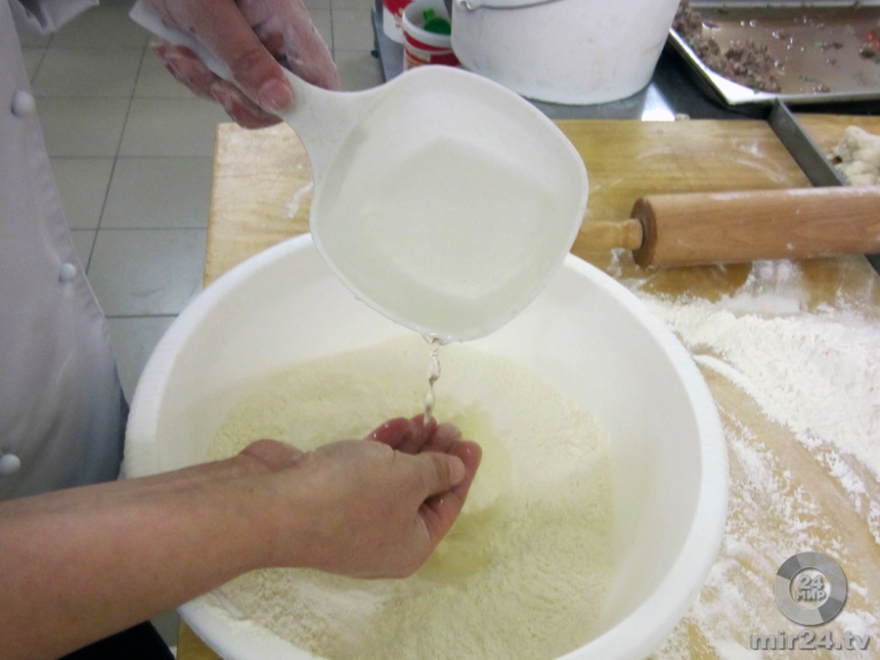





Then we form a thick sausage from the dough, cut into pieces 2 cm thick and roll each into a very thin oval pancake (folded in half, it should fit in your pan). We spread the filling on one half of the pancake with a thin layer, otherwise the miracle may not be fried inside. Leave the edges free. Close the stuffing with the second half of the cake and connect the edges. Excess dough must be cut off. I use a figured roller knife, beautiful "cloves" are obtained.






We fry the miracle in a dry frying pan, without oil. The pan must be well heated and transferred to it a miracle. Fry on both sides, remove to a wooden board and grease with melted butter.

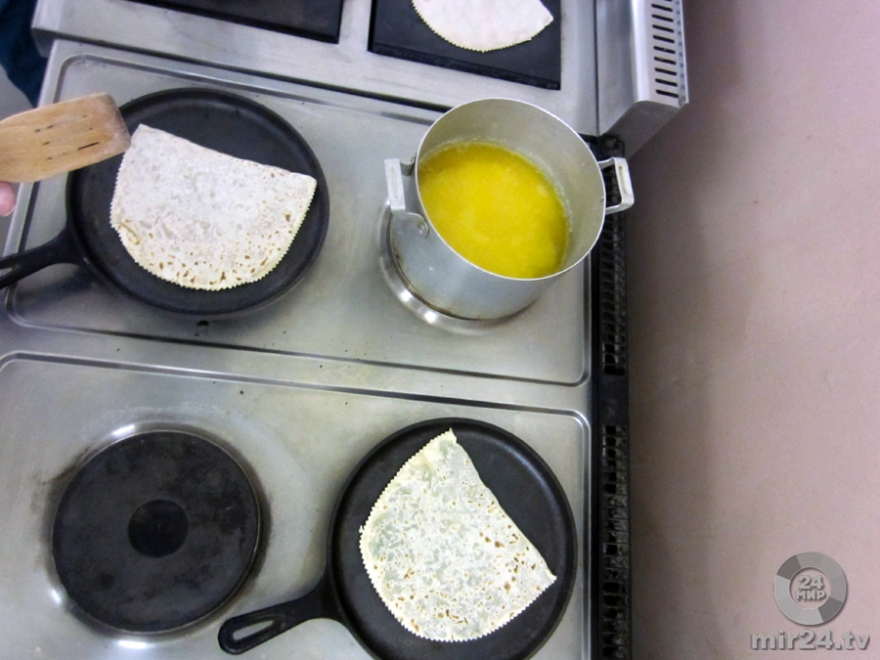


Now cut into pieces and serve immediately. Miracle should be eaten hot.

Meat filling is just one of many possibilities. Here are a few more:
Green stuffing
Nettle leaves, spinach, quinoa, cilantro, rinse thoroughly and finely chop. Add finely chopped and browned onion in oil (2 tablespoons per 300 gr. greens), salt, pepper, mix well. Such a filling can be put more than meat, the miracle turns out juicier.


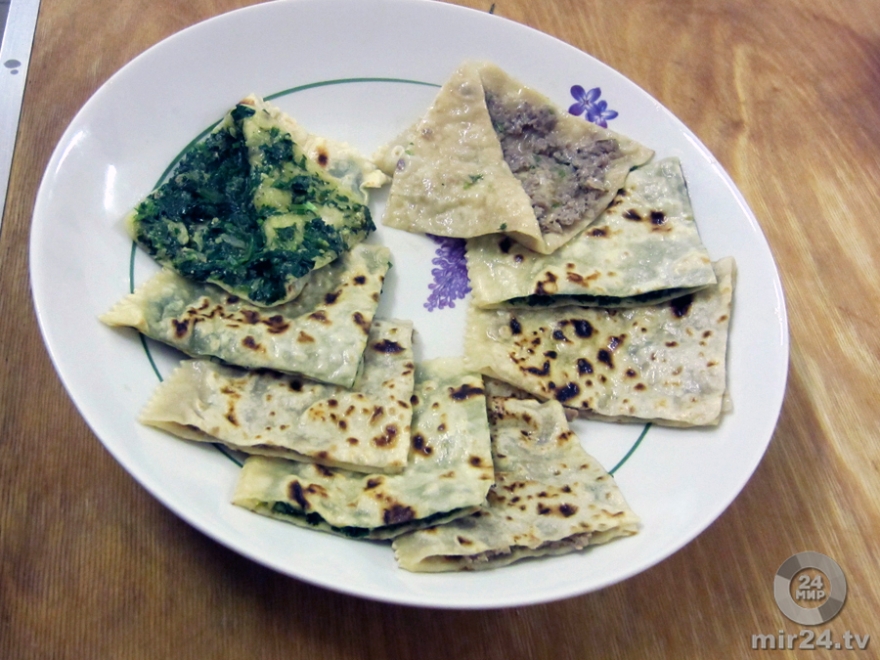
From cottage cheese and cheese
We take 200 gr. cottage cheese and grated Dagestan cheese, mix, add an egg, finely chopped onion and fried in melted butter (1 onion), salt a little and mix well. If you slightly change the proportion and add more cheese than cottage cheese, then the filling will be pleasantly “stretched”, it will also turn out interesting.
from a pumpkin
We clean 500 g of pumpkin, rub it on a grater, add onion finely chopped and browned in oil (2 tablespoons), salt to taste, add 1 tbsp. l. sugar, mix.
Dargin miracle
The Dargin miracle is being prepared in a completely different way. Prepared for him yeast dough from flour, salt, warm water and yeast. The dough should not be very dense, but still such that it can be rolled out with a rolling pin. It is necessary to let him come up, hug him, let him come up again.
For the filling, we take the pulp of lamb or beef and raw peeled potatoes in equal parts. We cut the meat into small pieces, add finely chopped interior fat, onion, cut into thin slices, salt, add black pepper and a little finely chopped basil. At the very last turn, add the potatoes there, cut into very thin slices.
We separate a part from the dough, roll it into a thin layer of 3-4 mm. Arrange in a pan so that the edges hang slightly. We lay the filling in a layer about 1.5 cm thick, cover it with a second layer of thinly rolled dough, of a smaller diameter. We connect the edges and pinch tightly with a pigtail. Grease with sour cream on top and bake in preheated degrees to 230-250: oven on both sides (about 20-25 minutes). Then we take it out on a board or plate, grease with butter, cover with a towel. Serve on the table after 15 minutes.
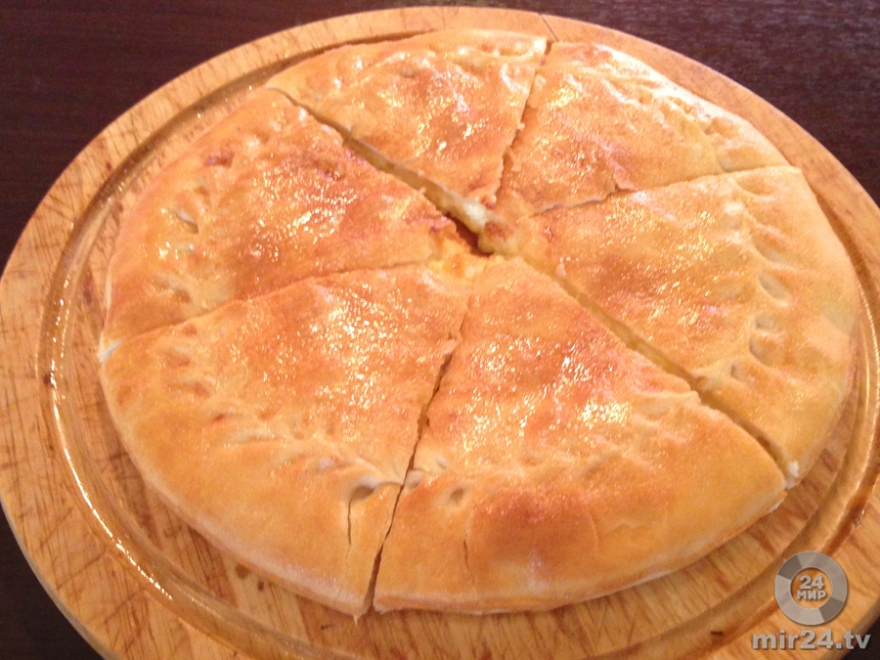
Khinkal
Khinkal is the pride of the highlanders, it is cooked absolutely everywhere in Dagestan. Do not confuse with Georgian khinkali! This is a completely different, complex dish. Khinkal is served as the first and second course at the same time, prepared at any time of the day for family and guests, for all occasions.

Khinkal is not even a dish, but a whole complex of dishes consumed at the same time. These are pieces of dough boiled in broth, in each place slightly different in recipe and form, which are eaten dipped in sauce, with lamb or beef (sometimes with chicken) and washed down with strong meat broth with spices. Khinkal always goes with sauces. Most often it is sour cream or kefir with garlic and herbs. We also love spicy tomato sauce for khinkal.

Avar khinkal are lush, thick cakes. The dough is kneaded with curdled milk or whey, salt and soda are added, which makes it fluffy, delicate in taste, extremely satisfying.

Kumyks prepare khinkal from unleavened dough, like for dumplings. It is rolled out in a thin layer, cut into squares, diamonds or strips, and then boiled in broth.
Lak khinkal. The dough is rolled into sausages, which are cut into cubes the size of a walnut. Each piece is placed on the left palm, making a recess in the middle with the thumb of the right hand (giving the dough the shape of an "ear").

For the Dargin khinkal, unleavened dough is rolled out in a thin layer, sprinkled with chopped walnuts, rolled into a roll and cut into small pieces. For Lezgi khinkal, the dough is rolled out thinly and cut into small squares. Derbent city khinkal is prepared like Lezgi, but the meat is scrolled through a meat grinder, spices are added and fried. The sauce is crushed garlic with the addition of vinegar. For shepherd's dough, they roll it out in the form of a thin sausage and tear off pieces that fit in a fist. Before lowering into the water, pieces of dough are squeezed in a fist.
Kurze
Kurze is a Dagestan variety of dumplings (or dumplings, since the fillings are made in a variety of ways). They differ in the way of pinching and fillings. The fillings are made from meat, like on dumplings, but with tomato sauce and spices, or from herbs (nettle, spinach, halta, quinoa, wild garlic, cilantro in any combination). They also make kurze with cottage cheese, both sweet and salty, then greens are added). For curze with eggs, the filling is prepared from raw eggs with fried onions and butter. Only in one village can you be told about dozens of options for cooking kurze. And so in every new place. The greens are stewed or put raw, the egg is added where it is raw, where it is boiled chopped, and where it is raw, it is stewed along with the filling. A variety of spices are used, fried onions, green onions, salt, sugar, cinnamon are added to the cottage cheese. What can you not try in Dagestan!

Pastries, meat, drinks
In Dagestan they bake a lot. From unleavened, yeast, shortcrust and puff pastry. Sweet buns, cookies and pies.
And with all sorts of sweet fillings and salty. Very loved, for example, boats from sweet dough stuffed with cottage cheese or cottage cheese and cheese, in half. They are not completely pinched, so that in the middle the filling appetizingly looks out.
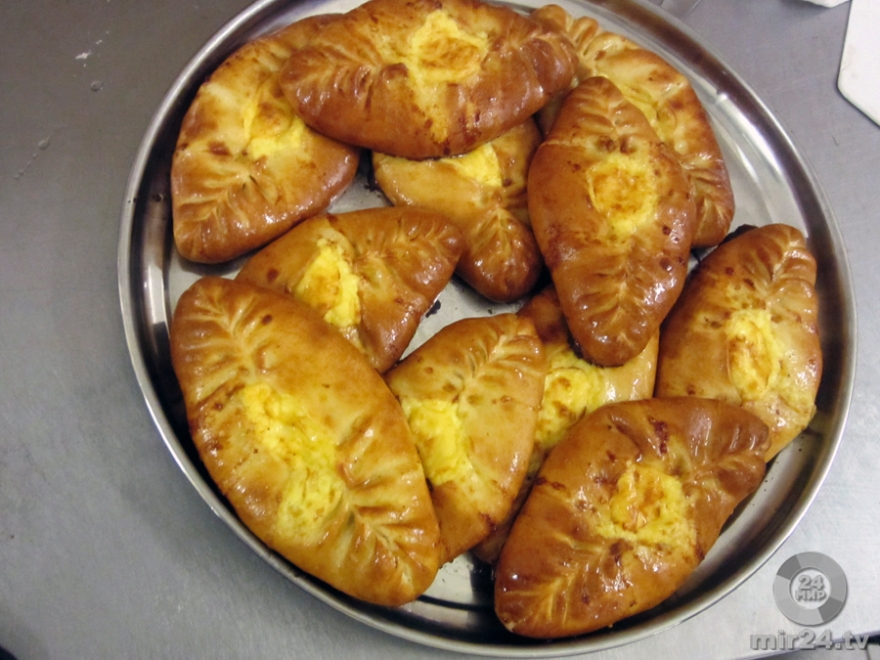





And, of course, a lot of meat is cooked in Dagestan: shish kebabs, homemade lamb sausages with cumin and other spices, sukhta (sausages with liver and rice), saris (sausages with liver, garlic and cornmeal), stew with tomato and dry wine, roast.
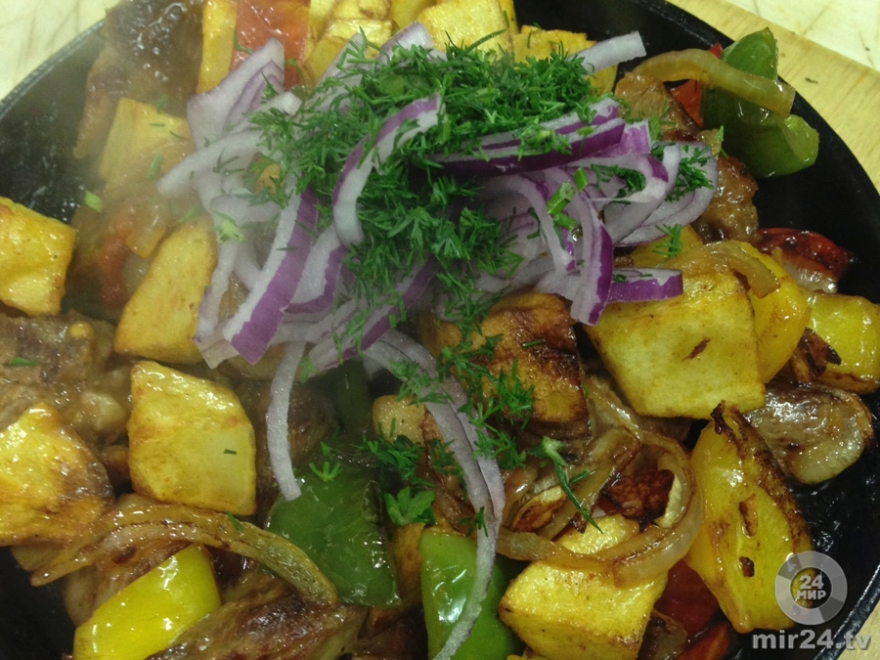
The recipes of Dagestan cuisine are based on what the mountains give people. These are lamb and beef, poultry, dairy products, rice, flour. As well as onions, tomatoes, a lot of greens (dill, parsley, green onion, cilantro). Of the drinks, sour-milk drinks are loved, especially tsuru nek. This is the Dagestan analogue of tan. When butter is churned, whole fresh milk is poured into clay jugs and such a jug is shaken for a long, long time. As a result, it crashes homemade butter. And the serum that remains is tsuru nek. Chilled, it perfectly quenches thirst.
Every rural family does Home wine, because vineyards feel great on the slopes of the mountains. Until now, each owner has his own secrets of making this drink. Sweet, semi-sweet and dry grape and fruit wines accompany any festive feast.
But still, the main drink of the Dagestan people is tea. They drink it all the time: at breakfast, lunch and dinner, in between, when guests come and just in between times. And it's on the table all the time sweet pastries and candies.
Tatyana Rubleva